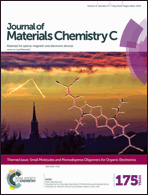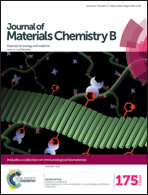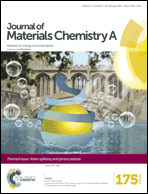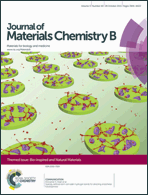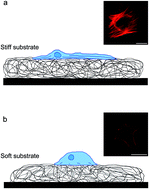Read this Themed Issue featuring the most recent and influential work from the world leading community of researchers working in solid state chemistry and its applications, recently published in Journal of Materials Chemistry A in celebration of Professor Tony West.
Professor Tony West was the founding Editor of the Journal of Materials Chemistry. This issue honours his contribution to the field of solid state chemistry, and is focused on the people who have worked with him over the course of his career.
Guest edited by Caroline Kirk (University of Edinburgh, UK), Finlay Morrison (University of St Andrews, UK), Jan Skakle (University of Aberdeen, UK), Derek Sinclair (University of Sheffield, UK) and John Irvine (University of St Andrews, UK), the Themed Issue puts a spotlight on recent scientific developments in the area of solid state chemistry and highlights remarkable contributions made by the leading scientists in this important research area.
________________________________________________________________________
Article selection:
Themed issue on advances in solid state chemistry and its applications
Caroline A. Kirk, Finlay D. Morrison, Jan Skakle, Derek C. Sinclair and John T. S. Irvine
J. Mater. Chem. A, 2018, 6, 5241-5242 DOI:10.1039/C8TA90062K
Remarkable impact of low BiYbO3 doping levels on the local structure and phase transitions of BaTiO3
Deluca, Z. G. Al-Jlaihawi, K. Reichmann, A. M. T. Bell and A. Feteira
J. Mater. Chem. A, 2018, 6, 5443-5451 DOI:10.1039/C7TA11096K
Local structure and conductivity behaviour in Bi7WO13.5
Borowska-Centkowska, M. Leszczynska, F. Krok, M. Malys, W. Wrobel, S. Hull and I. Abrahams
J. Mater. Chem. A, 2018, 6, 5407-5418 DOI:10.1039/C7TA09225C
Biotemplating: a sustainable synthetic methodology for Na-ion battery materials
Silvija Zilinskaite, Anthony J. R. Rennie, Rebecca Boston and Nik Reeves-McLaren
J. Mater. Chem. A, 2018, 6, 5346-5355 DOI:10.1039/C7TA09260A
Defect chemistry and electrical properties of sodium bismuth titanate perovskite
Yang, M. Li, L. Li, P. Wu, E. Pradal-Velázquez and D. C. Sinclair
J. Mater. Chem. A, 2018, 6, 5243-5254 DOI:10.1039/C7TA09245H
Gaudefroyite: a mineral with excellent magnetocaloric effect suitable for liquefying hydrogen
Rukang Li, Guangjing Li and Colin GreavesJ.
J. Mater. Chem. A, 2018, 6, 5260-5264 DOI:10.1039/C7TA06883B












